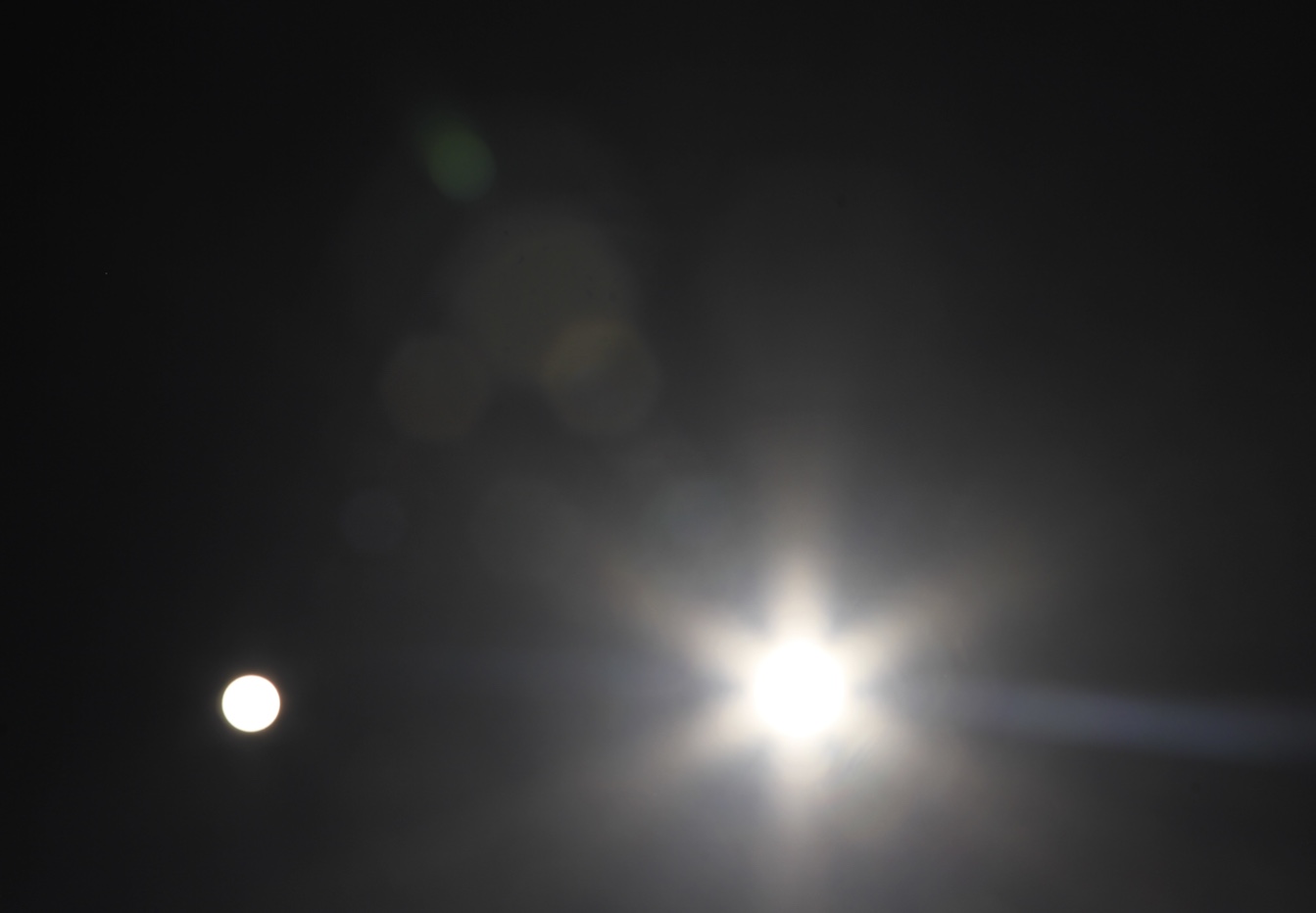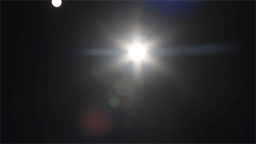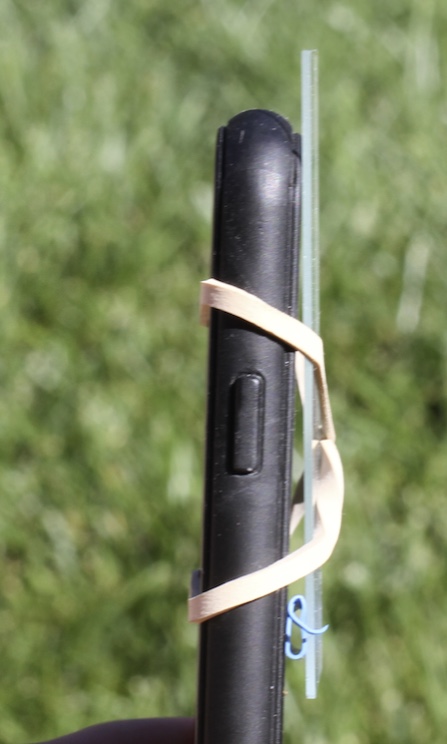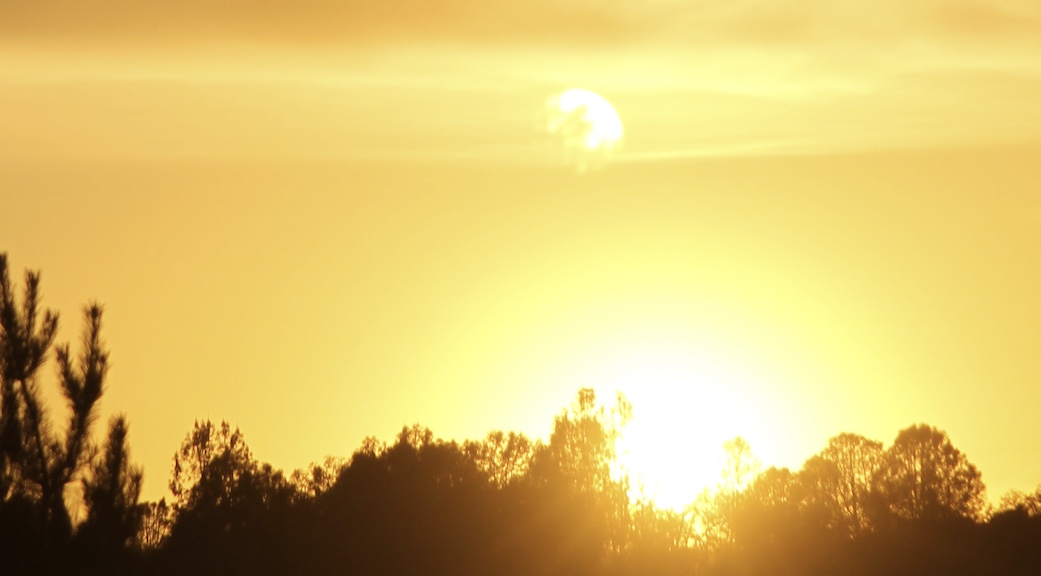
A popular video claims to show an object in the sky that resembles a "second sun". However analysis of the video proves that what is shown is an offset lens reflection of the Sun itself. There is nothing else in the sky. The effect is also not a sun-dog, an atmospheric reflection, or a mirage. It's just a reflection happening at the camera.
We can see this quite clearly if we stabilize the video so the background is fixed. We can then see the reflection moving with the camera motion. Notice how the small movements of the reflection are in sync with the large movements of the lens flare.

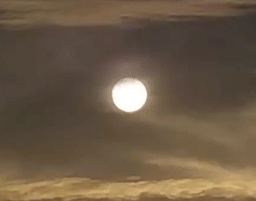
Offset lens reflections occur when a flat piece of glass (such as a filter) is in front of the camera, but is tilted slightly away from the plane of the camera (either accidentally, or deliberately). When combined with a second flat optical surface (like the protective cover of a cell-phone camera, or a second filter on a larger camera) you get a fainter reflection of the sun offset from the actual sun in the direction of the tilt.
It is easy to simulate this effect with a cell phone such as the iPhone. Here I just attached a glass slide with a rubber band.

This results in a "second sun"
There are a number of reasons that indicate that the Florida video is an offset lens reflection:
- It's next to the sun - All such reflections are very close to the sun.
- It's the same size as the sun - Since it's a reflection of the sun, it's going to be the same size.
- Nobody else saw it - If there was something in the sky, then it would have been visible to millions. But only one person claims that she (and a friend) saw it.
- It looks like other similar effects known to be offset lens reflections
Since the offset reflection depends on the direction of the tilt, then when the camera moves the reflection will move with the camera, which is the opposite direction to the background in the video. Here's a demonstration with a more pronounced rotation.
To detect this in the video we need two frames at the same zoom level, but with the camera rotated slightly. Now the videographer does a good job of keeping the camera vertical, but there are a few degrees of sway, so we can take two such frames from the video and overlay them so that the background matches.

As you can see, in the overlaid image (which I've made partially transparent so you can see the background matches), the "second sun" has rotated about the actual sun.
If you compare the amount of rotation of the reflection with the amount of rotation of the image, you can see they match up.

Hence it must be an offset reflection.
So is this a hoax? It's hard to say. It's quite possible to get this effect by accidentally cross threading the second filter on a camera. Here's an example of a cross threaded filter on my camera.

And here's the result:
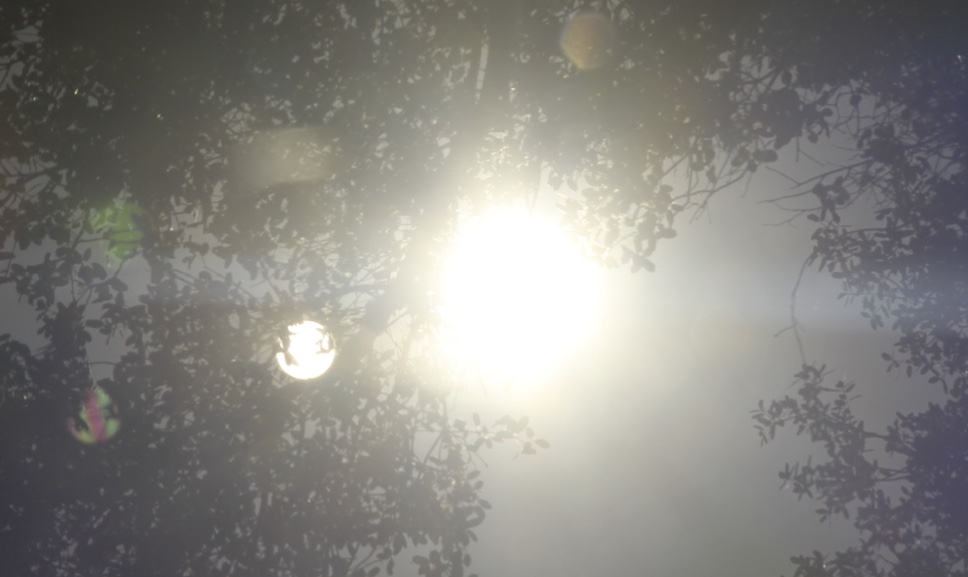
This example is actually quite compelling as a "second sun", as it seems to be behind the leaves of the tree. However those are the leaves in front of the actual sun.
So you can see it's an easy effect to fake, and yet it's also a quite easy effect to have happen accidentally if you have stacked filters. Either way though, it's not a second sun, or Niburu, or Planet X. It's just a reflection of the sun.
So what about the other things that it is not? Various things have been suggested by over-eager debunkers on the Youtube video (and then repeated uncritically on The Daily Mail)
It's not a sun dog, because sun dogs, despite often being called "mock suns" are not perfectly round disks like the sun. They look like this:

It's not an "atmospheric reflection", as there's really no such thing as an atmospheric reflection. The air cannot reflect light in any meaningful way. It can only absorb it, scatter it, or bend it. The latter is "refraction", which is the closest to a real atmospheric phenomenon, a mirage such as fata morgana, that can create something you could loosely call a second sun. But the best you are going to get is a distorted mirroring that might seem to break off a bit of the sun as seen in this montage:

Atmospheric refraction cannot create a second full clear image of the sun, the atmosphere lacks the refractive index, and is too turbulent.
Note: This is a summary post of material in the discussion thread. The original first post follows.
Last edited:


